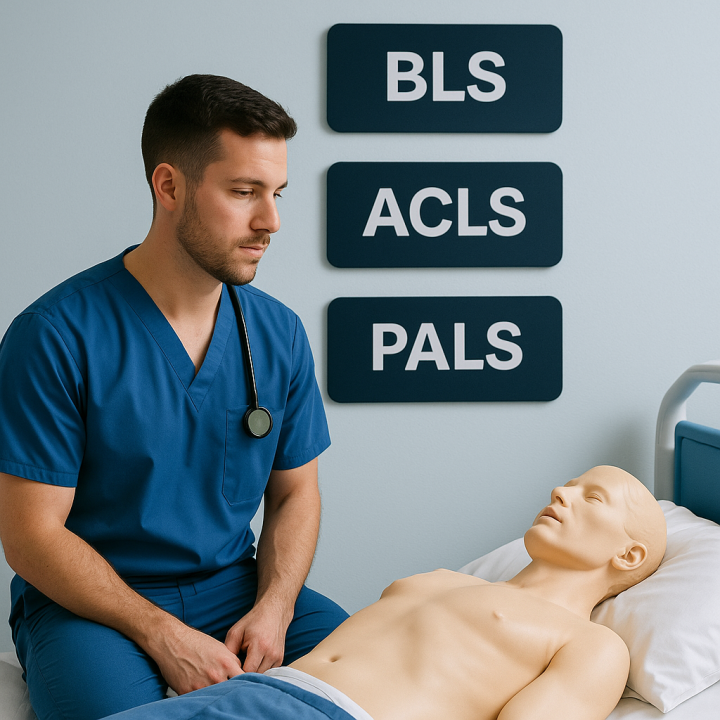If you’re pursuing a career in healthcare, you’ve probably come across the acronyms PALS, BLS, and ACLS. But with all these certifications on your radar, the question arises: Which one should you take first?
Let’s break it down so you can make the best decision based on your goals and experience level.
1. Start with BLS: The Essential Foundation
BLS (Basic Life Support) is the prerequisite for both ACLS and PALS. It covers core life-saving skills such as:
- High-quality chest compressions
- Use of an AED (automated external defibrillator)
- Basic airway management
- Rescue breathing for adults, children, and infants
Why take it first?
It’s the foundation upon which ACLS and PALS are built. No matter your specialty, BLS is required for nearly every healthcare provider and must be current before you enroll in advanced courses.
2. ACLS or PALS Next? It Depends on Your Role
Once you have BLS certification, your next step depends on your clinical setting or career path:
✅ Choose ACLS (Advanced Cardiovascular Life Support) if:
- You work in or are entering adult critical care, emergency medicine, anesthesia, or cardiology
- You will be part of code teams or manage adult cardiac arrest situations
- You’re required to interpret ECG rhythms and administer ACLS medications
✅ Choose PALS (Pediatric Advanced Life Support) if:
- You work with pediatric patients (NICU, PICU, pediatrics, emergency department)
- You’ll be involved in pediatric codes or respiratory emergencies
- You need to understand pediatric rhythm recognition, dosing, and team dynamics
3. Still Not Sure? Ask Yourself These Questions:
- What age group will I be caring for most often?
Adults = ACLS, Children = PALS - Does my job description require both?
Some providers in emergency departments or prehospital settings may benefit from having both. - Am I new to clinical practice?
If you’re still early in your training, start with BLS and follow with ACLS unless you’re on a pediatric-focused path.
4. Pro Tip: Don’t Wait Too Long Between Courses
If you’re planning to take both ACLS and PALS, consider doing them within the same timeframe. The knowledge overlaps in airway management, team dynamics, and algorithms can reinforce each other and make learning smoother.
Final Thoughts
In most cases, the logical order is:
1. BLS → 2. ACLS or PALS → 3. Add the other if your role requires it.
Choosing the right order can make your certification journey smoother and help you retain more of what you learn. More importantly, it ensures you’re better prepared when it matters most—saving lives.


